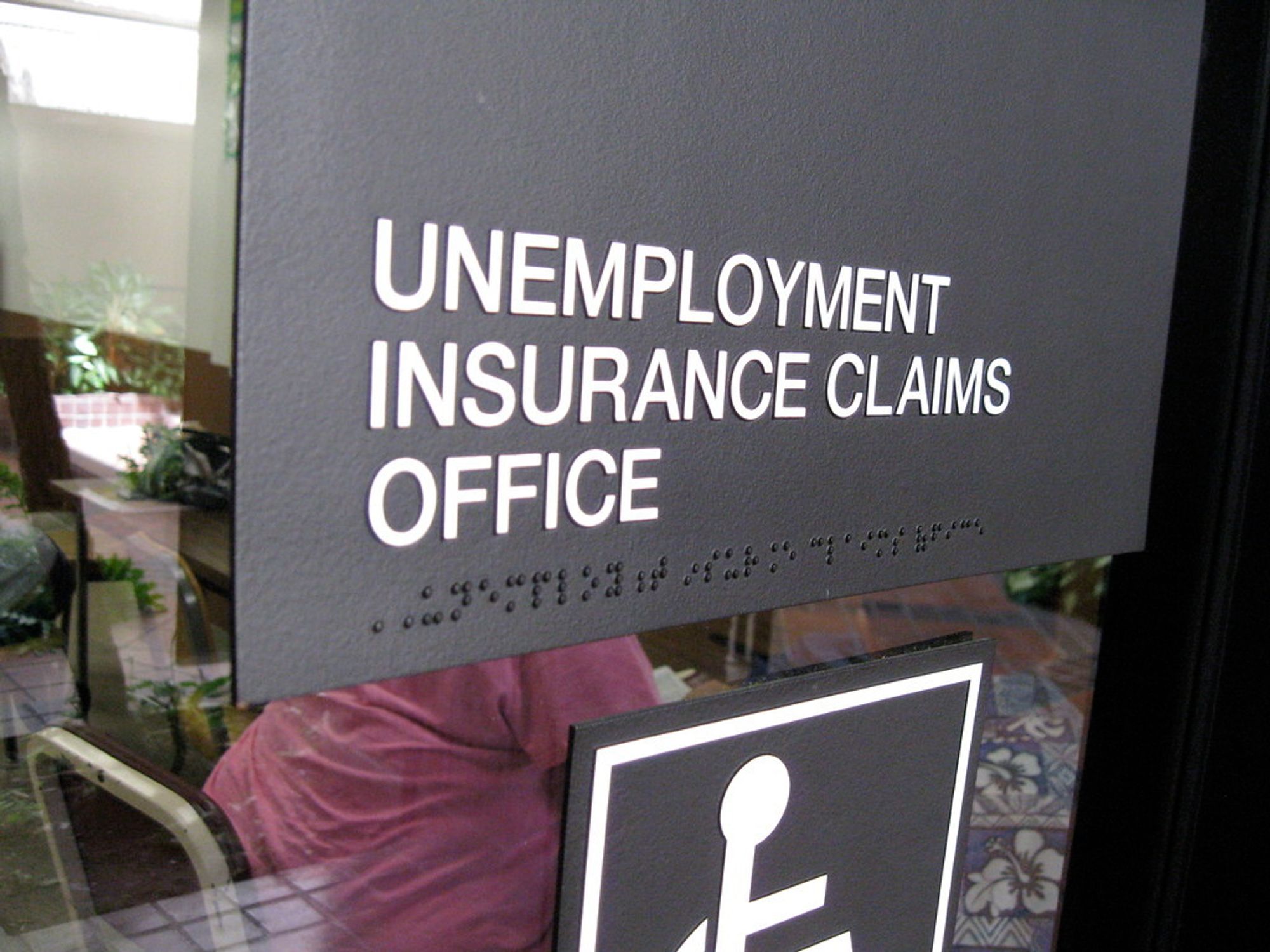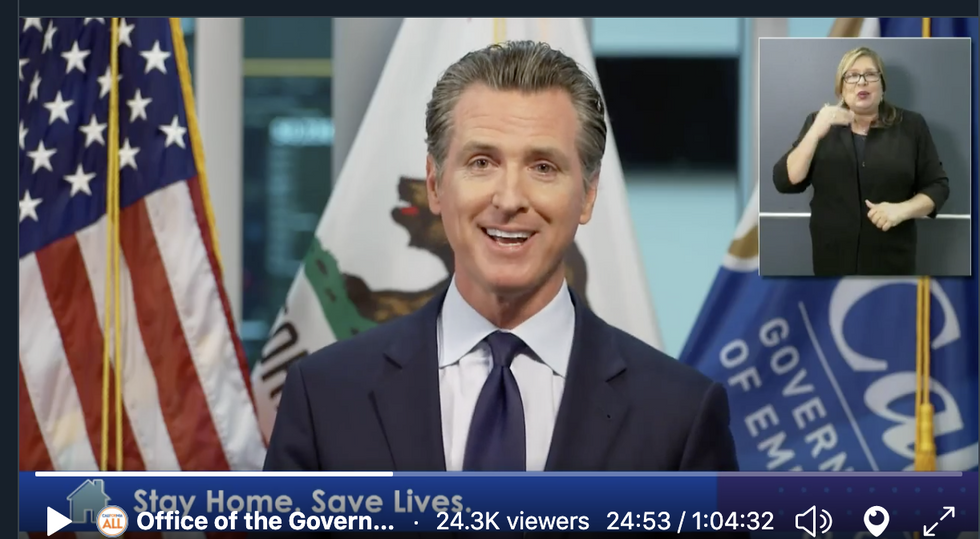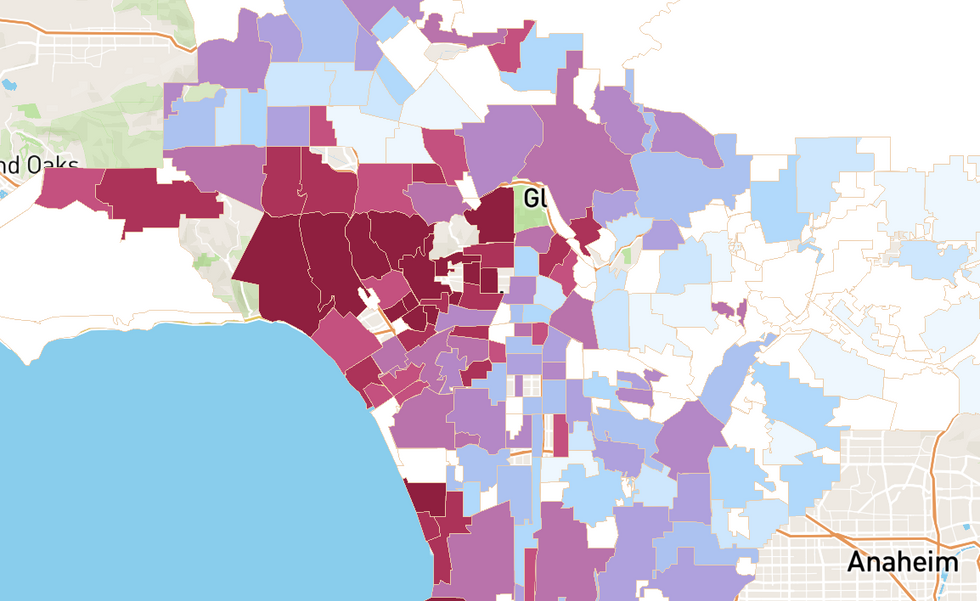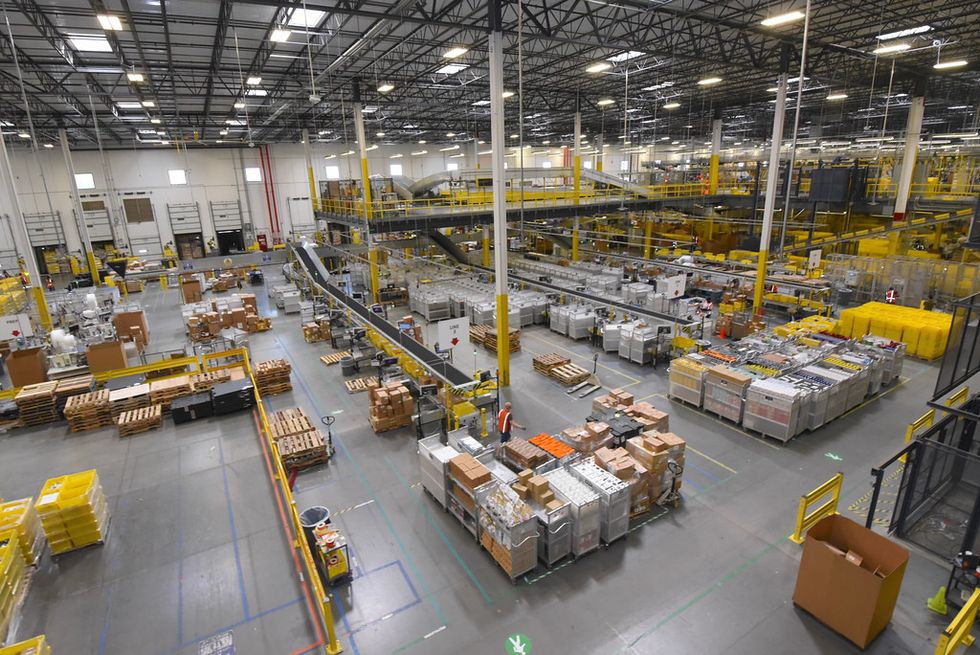Coronavirus Updates: California Unemployment Claims at 1.9M; L.A. Amazon Worker Contracts Covid-19; Disney Initiates Furloughs

Here are the latest headlines regarding how the novel coronavirus is impacting the Los Angeles startup and tech communities. Sign up for our newsletter and follow dot.LA on Twitter for the latest updates.
Today:
- Amazon Warehouse Worker in L.A. Tests Positive, As Company Struggles with Covid-19
- USC Shows (and Ranks) L.A. Neighborhoods With COVID-19 Cases
- Gov. Newsom to small businesses: "Let's get ahead of the queue"
- L.A. County records 78 deaths, cases top 4,000
- Patrick Soon-Shiong wants to buy shuttered hospital, convert to COVID-19 command center
- Disney announces furloughs amid pandemic, but employees keep healthcare
Disney announces furloughs amid pandemic, but employees keep healthcare

Days after Disney announced top executives would take salary cuts to save money, the entertainment giant notified employees that many of them "whose jobs aren't necessary at this time" will be furloughed. "All impacted workers will remain Disney employees," the company said Thursday, meaning they will continue receiving healthcare benefits as paychecks are cut. Disney has 223,000 workers and is L.A.'s biggest employer. It is expected many of the cuts would come from the company's theme parks that have been closed, and it was not known how many employees would lose their job from the studio and other businesses.
Patrick Soon-Shiong wants to buy shuttered hospital, convert to COVID-19 command center
Dr. Patrick Soon-Shiong, one of L.A.'s richest men, wants to use his family foundation to buy shuttered St. Vincent Medical Center near downtown and convert it into a hospital to treat COVID-19 patients and conduct coronavirus research. The story was first reported by The Los Angeles Times, which Soon-Shiong owns.
The Chan Soon-Shiong Family Foundation has offered to purchase the medical campus out of bankruptcy for $135 million. Terms of the bid were not disclosed. St. Vincent has been closed since January as the sprawling medical facility fell into bankruptcy. All bids for the hospital must be submitted to a judge by Friday. A final hearing on the sale is scheduled later next week.
L.A. County records 78 deaths, cases top 4,000
Another 13 people died of the novel coronavirus in Los Angeles County and officials logged 534 new cases on Thursday, pushing the total number of people that tested positive past 4,000.
So far, 78 people have died in the county. Of the most recent deaths, 12 were over the age of 65, while one was between 41 and 65. With the exception of one individual over 65, all had underlying health conditions.
The daily count of COVID-19-positive individuals increased by 1,000 in the past 48 hours, bringing to the total to 4,045.
The increasing number has put strain on hospitals. Los Angeles County Public Health Director Barbara Ferrer said that about 22% of positive cases in L.A. have required hospitalization at some point. As of Thursday, 241 individuals were in hospital beds — about two thirds of them had no underlying health conditions, Ferrer said. She said there are five COVID-19 patients now in intensive care that are under 35 and a couple have no underlying health conditions.
Statewide, the death toll rose past 200 and on Wednesday. In a sign of just how concerned officials are, Los Angeles Mayor Eric Garcetti urged the city's 4 million residents on Wednesday to wear protective face covering to stem the spread of the fast-moving virus. To punctate his point, he donned a black mask, saying "I know it will look surreal. We're going to have to get used to seeing each other like this."
The news comes as new cases have emerged among the homeless and jailed population — both groups officials have been closely monitoring. There have been nine cases among homeless. At the county jail, seven individuals have tested positive, including one inmate. At the Lancaster State Prison, six inmates have the virus. Two homeless shelters have also reported Covid-19 cases.
Gov. Newsom to small biz: "Let's get ahead of the queue"

California Governor Gavin Newsom spoke directly to state business owners in his daily coronavirus address on Thursday, briefing them on several new statewide programs, and imploring them to begin the process of registering for federal help. Since March 12, 1.9 million Californians have applied for unemployment insurance, he said.
Newsom introduced two actions he says will help make it easier for small businesses in California to get back on their feet. The first is an interest-free, no-penalty deferral of taxes for up to $50,000 for one year. The governor called that a "bridge loan" to help businesses recover.
The second is a $50M program to provide loans for California businesses who, for one reason or another, don't qualify for federal assistance.
Newsom also strongly encouraged businesses to sign up for the federal programs that will provide grants and loans to struggling businesses. Registration for those programs open tomorrow.
Newsom stressed it's "profoundly important" people fill out their forms as soon as possible, in particular for the "paycheck protection program," a grant program that allows businesses who keep paying at least 75% of their employees to be reimbursed by the federal government.
"Let's get ahead of the queue," he said.
Newsom also touted an effort led by Fresno-based jobs site Bitwise to match unemployed Californians with jobs in high demand called OnwardCa.org. The site, he said, is prioritizing four industries in particular: healthcare, agriculture, logistics, and grocers.
USC Shows (and Ranks) L.A. 'Hoods With COVID-19 Cases
 Tami Abdollah
Tami AbdollahLos Angeles locals have always known it is a city of neighborhoods, but this novel coronavirus has made that especially clear. The official lines on where neighborhoods begin and end, and where cases are to be found, have never seemed so murky.
On Thursday, the USC Viterbi School of Engineering released two new COVID-19 data visualizations that aim to make at least where COVID-19 cases are being found, more clear. Read more >>
Amazon Warehouse Worker in L.A. Tests Positive, As Company Struggles with Covid-19
 Monica Nickelsburg, GeekWire
Monica Nickelsburg, GeekWireAt least 30 of the fulfillment centers that power Amazon's e-commerce business have outbreaks of COVID-19, according to news reports and employee accounts. The most recent case in Los Angeles was reported Wednesday, when Amazon confirmed to City News Service that an employee at their warehouse in Atwater Village has tested positive for COVID-19. The mounting cases are sparking walkouts, frustration, and an unprecedented challenge for a tech company that finds itself at the center of the coronavirus pandemic. Read more >>
- Coronavirus Updates: LAUSD Closes, Apple Developer Summit ... ›
- Los Angeles Coronavirus Updates - dot.LA ›
- Startup Aims to Produce 10000 COVID-19 Kits a Day at Los Angeles ... ›
- Coronavirus Updates: Say Goodbye to Hollywood? - dot.LA ›
- Coronavirus Updates: Trump Jumps Into Elon Musk Tweetstorm on Pandemic Reopening - dot.LA ›
- Atom Tickets is Optimistic About Movie Theaters' Future - dot.LA ›
- Disney Lays Off 28,000 at U.S. Theme Parks - dot.LA ›
- LA Optimized Aims to Get City's Small Business to Ecommerce - dot.LA ›
- Are Startups Covered by the Paycheck Protection Program? - dot.LA ›
- Amazon Is Building a Machine Learning Research Center at USC - dot.LA ›
- Amazon Employs More People in California than Anywhere Else - dot.LA ›





 Image Source: Perelel
Image Source: Perelel
 Image Source: Valar Atomics
Image Source: Valar Atomics Image Source: Waymo
Image Source: Waymo Image Source: Apple
Image Source: Apple